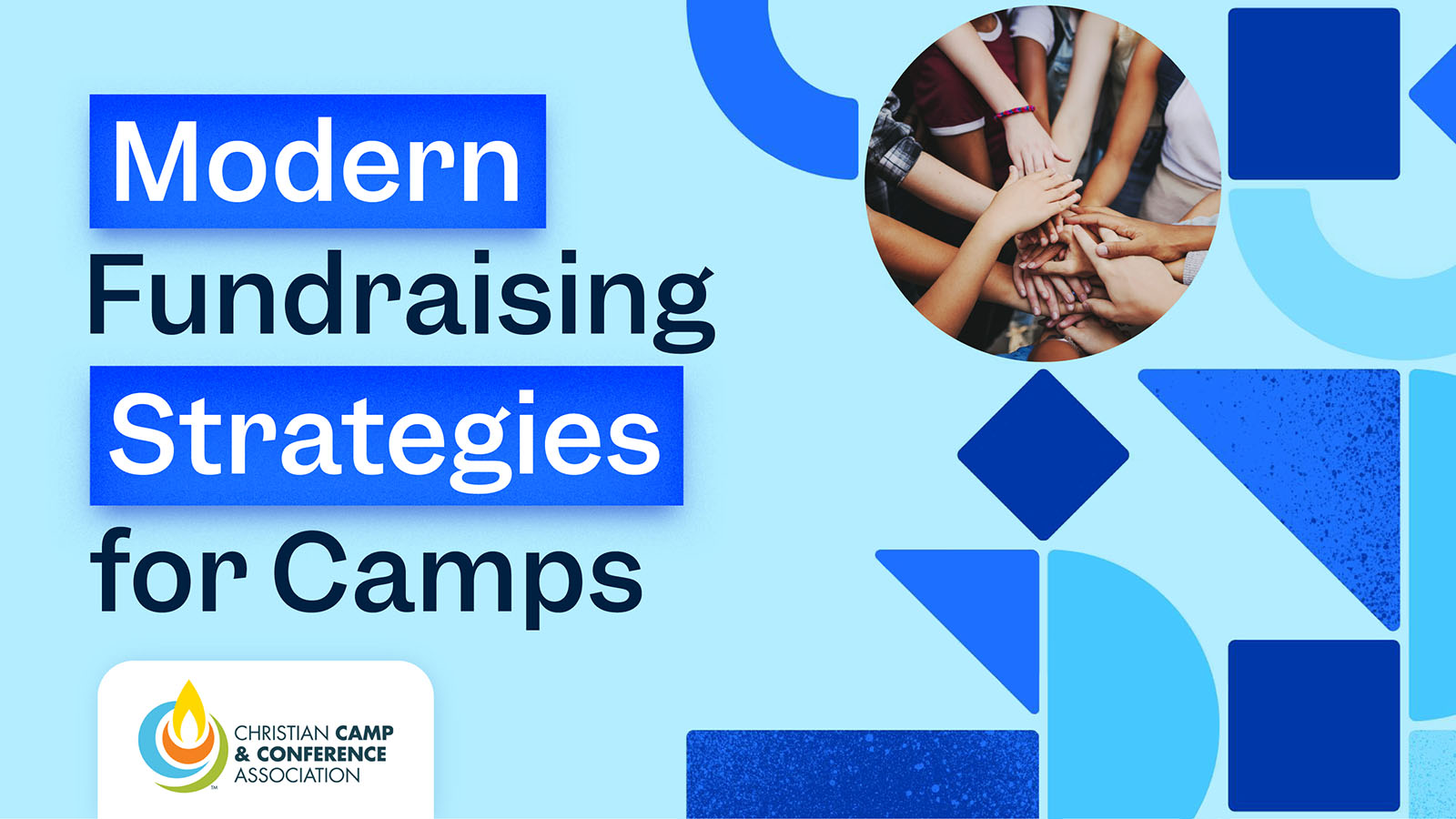As a new nonprofit, we’re sure your to-do list is approximately eight miles long. But however busy and resource-strapped you may be, there’s one item that’s essential to your success: creating a budget. If you have big hopes and dreams, it’s your budget that will make them a reality.
For most of us, creating a budget is intimidating as all heck. If you’re not a financial wizard, it can be hard to know where to start. But whether you’re already awash in funding or don’t have a dollar to your name, budgeting is a must for your new nonprofit. Your budget will inform your strategy, help you achieve stability, increase efficiency, and keep the lights on. So, brush off those excuses, and let’s get to it.
What’s in a nonprofit budget?
A lot of new nonprofits think a budget is all about spending as little money as possible. Instead, think of it as a tool to achieve financial success. A nonprofit budget is a document that details your annual financial plans, including:
- how you’ll raise money (i.e., your revenue),
- how you’ll spend money, and
- your operating expenses.
So, in an ideal world, your revenue will be greater than your expenses. And before we forget: Your budget should align with your fiscal year, which ends on June 30th for most nonprofits.
8 steps to create your budget
While creating a budget might feel overwhelming, all you need is your laptop, a comfy chair, and a relaxing playlist. (And you don’t really need those last two, but since you’re settling in for a while, we think they’ll help.) If you’re wondering where to begin, the answer is with a blank sheet of paper or a blank Excel sheet. Then, follow our eight easy-ish steps to budget success.
- Plan ahead. Creating a budget takes time, so the very first thing you need to do is work backward. How long will it take to do your research, make a budget, get stakeholder buy-in and board approval, and make any updates? We’d guess at least a month—and that’s if you’re working late nights.
- Define your program activities. Before you dive into the numbers, you need to ask yourself some basic questions about the programs and services your new nonprofit will be providing. That means clearly laying out each of the programs you’ll run in the year ahead. For example, a new nonprofit helping houseless people's pets might start with free dog grooming and low-cost pet care classes. And keep in mind that it’s easy to bite off way more than you can chew during your first year, so don’t write down 15 programs to start.
- Write down your program needs and group them by category. Underneath each program, jot down what you’ll need in terms of staff, supplies, facilities, and equipment. And really consider every hidden cost. If you offer free dog grooming, for example, consider staffing and equipment as well as rental space, cleaning products to sterilize equipment, licensing, and insurance (watch those nails!). Then, group those needs into basic categories, such as salaries, staff development, equipment, insurance, meetings, etc.
- Clarify your goals. In order to make a budget, you need to know where you are and where you’re going. Next, ask yourself what you hope to achieve in this first year. How many people do you want to serve? How will you define success? How do you hope to grow?
- Do your research. Since your nonprofit is new, you won’t have historical numbers to review, which means you’ll be doing quite a bit of estimating. But don’t worry: all that middle school math is totally going to come back to you. To ensure those estimates are accurate, you’re going to have at the research side of things. Look up the costs of everything related to your program needs, including salaries, benefits, materials, and rental costs. You can also visit local businesses and read up on emerging trends in the industry and nonprofit landscape. Try to get three estimates for each line item to ensure accuracy.
- Write down your estimated expenses. You know your programs, you know what you’ll need for ‘em, and you’ve done your research. Now, it’s time to write it all down. For each line item, write down the average cost based on your research. Then, multiply it by however many you’ll need.
- Estimate your revenue. With expenses out of the way, we can start on the fun part: revenue! (Okay, maybe not fun, but moderately less stressful.) Keep it simple by breaking your revenue into a few basic categories: grants, individual donations, events, and earned income are a good place to start. For each category, determine how much you think you can raise based on your grant eligibility, network, industry landscape, and current funding. Be as accurate as possible.
- Adjust, adjust, and adjust some more. Finally, compare your total revenue estimate with your total expense estimate. If your revenue doesn’t cover your expenses, you need to make some changes. Think through both revenue and expenses until your income minus your expenses equals $0. Please note that we don’t recommend zero-based budgeting in the long term. After all, it’s smart to have a cushion! When you’re starting out, however, zero-based budgeting is a helpful tool.
Benefits of a budget
“That… sounds like a lot of work,” you’re probably thinking wearily. “Maybe I should just paint with the colors of the wind and go with my gut!” That’s all very romantic, but trust us: There are a whole lot of benefits to having a budget.
- Reassure your donors. A budget looks good to your donors and funders because it allows them to see exactly where their donations are going. It establishes credibility from day one and proves that you won’t waste their gifts.
- Have a roadmap. It’s easy to make grandiose plans for the next 12 months, but your budget ensures the goals you set are realistic. It keeps you honest, ensuring you’re acting within your means, fundraising enough to cover your costs, and making the most of your resources.
- Know when to diversify. A budget shows you where your funding comes from, and as a result, it makes you aware of how dependent you are on any single source of funding. Then, you can course adjust as needed to diversify your funding sources.
- Make board meetings better. Your board is busy, so don’t waste their time with endless budgeting squabbles. If you can present them with a well-thought-out budget, they can focus on making it a reality.
- Understand event margins. If you rely on events for much of your fundraising revenue, you need to know how much those events are actually making.
- Apply to grants. As a new nonprofit, it’s likely you’ll be applying to various grants to get things off the ground. Those grant applications will want to know your budget.
- Smooth the hiring process. As your nonprofit grows, you’ll need to hire additional staff. But in order to pay them fairly, provide benefits, and give some job security, you need to know what you’re working with financially.
Be smart with your budgeting: 7 top-secret tips
Given that a budget is a must-have financial planning tool rather than a back-burner consideration, how can you create one that’s reliable, sustainable, and realistic? We have some thoughts.
Track your numbers carefully this year. Now, you’re a new nonprofit, getting ready to spread your wee nonprofit wings. That means a lot of estimating and research and question marks. But it won’t always be this way! Next fiscal year, you’re going to have experience and funding and data—so you want to get on top of it pronto. Starting now, track your expenses, revenue, and other key metrics diligently, updating your budget sheet every month.
Step away from scarcity. Until recently, nonprofits were proud of operating on teensy budgets, wasting not a cent on anything except their programs. But guess what makes programs run smoothly and effectively? A relationship-centered (not money-centered!) organization with happy staff members and the necessary equipment. Don’t create a shoestring budget; create one that’s an investment in your nonprofit’s well-being.
Bring everyone into the fold. Making a budget isn’t a solo activity, especially for a new nonprofit. Get different perspectives by consulting with staff members, volunteers, and, but of course, your board.
Keep those categories flexible. For your final budget, make sure your line items aren’t too broad or too narrow; you want them just right. If you have too many hyper-specific line items, you won’t have any room to flex. Too few, and you won’t have enough guidance.
Take into account seasonal trends. Nonprofits don’t raise money evenly throughout the year. For instance, on average, organizations raise a solid quarter of online revenue in December (M+R Benchmarks). Your budget should reflect the cadence of nonprofit fundraising, with an eye to busy and slow seasons.
Go monthly. Whatever budget template you start with, we’d suggest something that allows you to break things down by month. This will be less overwhelming and allow you to course-correct as the year progresses.
Don’t forget non-monetary items. Depending on your industry, in-kind donations can be essential to your organization’s success. Remember to include any donated goods or services in your budget.
Where to spend your money
As a nonprofit, you want to spend as much as possible on your mission. But you also need to pay salaries, build awareness, host events, and about a billion other things. So, where should you invest your money from day one to get the most bang for your buck and set your new organization up for a lifetime of success?
- Staffing. Your people are your number one asset, so you need to invest in them—and that includes fair salaries, decent benefits, and plenty of vacation days. Good employees may cost more in the short term, but their productivity, efficiency, and innovation will guarantee long-term organizational success.
- Nonprofit technology. To expand your reach, automate time-consuming processes, and understand the effectiveness of your various programs and strategies, you need nonprofit technology that takes your fundraising—and your mission—to the next level. We suggest a user-friendly, flexible, and customizable platform that scales with you and provides stellar support. (Oh, wait, it us!)
- Training and development. Over time, you’ll want to grow your programs and train your staff to take on new responsibilities. Professional development is a smart place to spend money because it increases productivity while boosting morale and staff retention.
Common nonprofit budget mistakes
As you can see, there’s a lot to consider when it comes to your first budget—and that makes it easy for even the most diligent new nonprofiteer to slip up. Before you tackle your first budget, make sure you’re avoiding a few common errors and pitfalls.
- Not considering hidden costs. Even if you do your financial due diligence, there are always hidden costs that you’ll forget to include. Don’t forget to add sneaky line items, like insurance, in-kind donations, event costs, and recruiting, to your spreadsheets.
- Not doing your research. We already told you that research was essential for a first-time budget, but we just want to hammer it home. If you want a budget that’s vaguely accurate and sets you up for short- and long-term success, you need to research trends, funding sources, and competitors.
- Budgeting for ALL the events. Fundraising events are swell, but most of them cost money and all of them cost time. Don’t rely on them too heavily during your already-hectic first year.
- Not giving yourself some wiggle room. Especially during its first few years, your nonprofit is going to experience many an up and many a down. And that’s fine—as long as you’ve budgeted for the downs. Things will break, people will leave, priorities will change. If you budget for the unexpected, you’ll be fine.
- Being unrealistic with your goals. This is your first year, so your goals likely won’t match your actual revenue. But you want things to be kinda-sorta close. Donors and funders don’t want to see that you missed your goal by $100,000. Keep things realistic—but still, give yourself something to reach for.
- Not diversifying your revenue streams. In our turbulent economy, relying too much on any one source of revenue is a major mistake. It’s great that you have that one big gift, but what if you don’t get it next year? Plan for revenue from gifts, grants, events, passive income, etc.
Tools to help you with your budget
We know this is all A LOT, so let’s wrap things up with a list of useful tools to help you budget like a pro. Remember: As with all things, you need to do your research and ensure whatever options you choose work for your unique organizational needs. That being said, here are a few of our favorite apps, software, and other budget tools.
- Budget and Cash Flow Toolkits. These two (comparably) reasonably priced toolkits were developed by the New York Council of Nonprofits’ finance gurus specifically for small nonprofits. They’re practical and straightforward, with built-in formulas and spreadsheets, helpful notes and definitions, quick allocations, and customizable templates.
- QuickBooks for Nonprofits. Manage your entire budgeting process with this all-in-one financial planning and accounting platform. QuickBooks integrates with Funraise, is simple enough that volunteers can use it, and TechSoup often offers discounted pricing for nonprofits. (Note: This might be a stretch goal in your first year.)
- ACCOUNTS. For small nonprofits, Software4Nonprofit’s ACCOUNTs software lets you easily track revenue, expenses, and fund balances and creates corresponding reports. It’s simple, inexpensive, and easy to use—perfect for a new nonprofit that doesn’t need any bells, whistles, and bassoons.
- Pennies. Are you looking at all this and thinking, “Nope, nope, does not compute, nope!” Try Pennies. Once you’ve created your first budget, this user-friendly iOS app will keep your spending and saving on track with little effort—plus it costs just $4.99. Just don’t expect anything fancy! Personally, we like to use it to track how much we spend on dog sweaters and soy lattes each month.
- Accounting staff. Yeah, we know it’s a heavy lift—but this is one investment that will save you a lot of headaches. If you can afford to invest in staff members, whether part-time, full-time, or external consultants, who really know their way around nonprofit finances, you’ll be well on your way to budget bliss.
Congratulations! Creating a new nonprofit is no small feat, and by creating a well-considered budget to accompany it, you’re well on your way to shaping a better world for years to come. Here’s to a bright, fiscally responsible future!
Your nonprofit’s first budget: Key takeaways
- A nonprofit budget is a document that details your annual financial plans, and it should include how you’ll raise money, how you’ll spend money, and your operating expenses.
- For new nonprofit organizations, your first budget is one of the most important planning tools for short-term success and long-term sustainability.
- Your budget should include expected revenue, program expenses, and administrative and fundraising expenses.
- Having an effective budget benefits your organization in many ways, including reassuring your donors and board, smoothing the grant application process, and providing a realistic roadmap.
- As a new nonprofit, you need to review your budget regularly and track your numbers carefully throughout your first year so that future budgets are as accurate as possible.































.webp)
.webp)











.webp)
.webp)

.webp)
.webp)
.webp)




